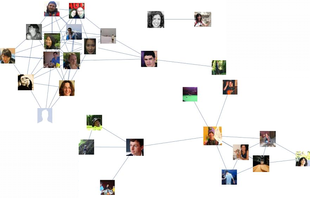15-344/Homework Assignment 8: Difference between revisions
No edit summary |
No edit summary |
||
| (4 intermediate revisions by 2 users not shown) | |||
| Line 7: | Line 7: | ||
{{15-344:Dror/Students Divider}} |
{{15-344:Dror/Students Divider}} |
||
Homework Assignment 8 Solution |
|||
'''9a) Show by combinatorial argument that <math>\binom{2n}{2} = 2 \binom{n}{2} + n^2 </math>''' |
|||
'''A)'''Split <math> 2n </math> into two groups of n. Then choosing 2 out of <math> 2n </math> can be seen as either choosing 2 from group 1 only |
|||
, which is <math>\binom{n}{2} </math> or 2 from group 2 only, which is also <math>\binom{n}{2} </math>, or one from each group, which is |
|||
<math> n^2 </math>. Their sum gives the total number of possibilities, which is exactly the right hand side of the equality. |
|||
== Scanned Solution to Homework8 P7,11,15 == |
|||
<gallery> |
|||
15-344-HW8-Yunheng Chen.jpg|Page 1 |
|||
</gallery> |
|||
Latest revision as of 10:39, 23 December 2015
This assignment is due at the tutorials on Thursday November 26. Here and everywhere, neatness counts!! You may be brilliant and you may mean just the right things, but if the teaching assistants will be having hard time deciphering your work they will give up and assume it is wrong.
Reread sections 5.1-5.5 of our textbook. Remember that reading math isn't like reading a novel! If you read a novel and miss a few details most likely you'll still understand the novel. But if you miss a few details in a math text, often you'll miss everything that follows. So reading math takes reading and rereading and rerereading and a lot of thought about what you've read. Also, preread sections 6.1-6.3, just to get a feel for the future.
Solve and submit problems 7, 9a, 11, and 15 in section 5.5. (9b was originally also assigned, but it is too difficult).
| Dror's notes above / Students' notes below |
Homework Assignment 8 Solution
9a) Show by combinatorial argument that
A)Split into two groups of n. Then choosing 2 out of can be seen as either choosing 2 from group 1 only , which is or 2 from group 2 only, which is also , or one from each group, which is . Their sum gives the total number of possibilities, which is exactly the right hand side of the equality.







